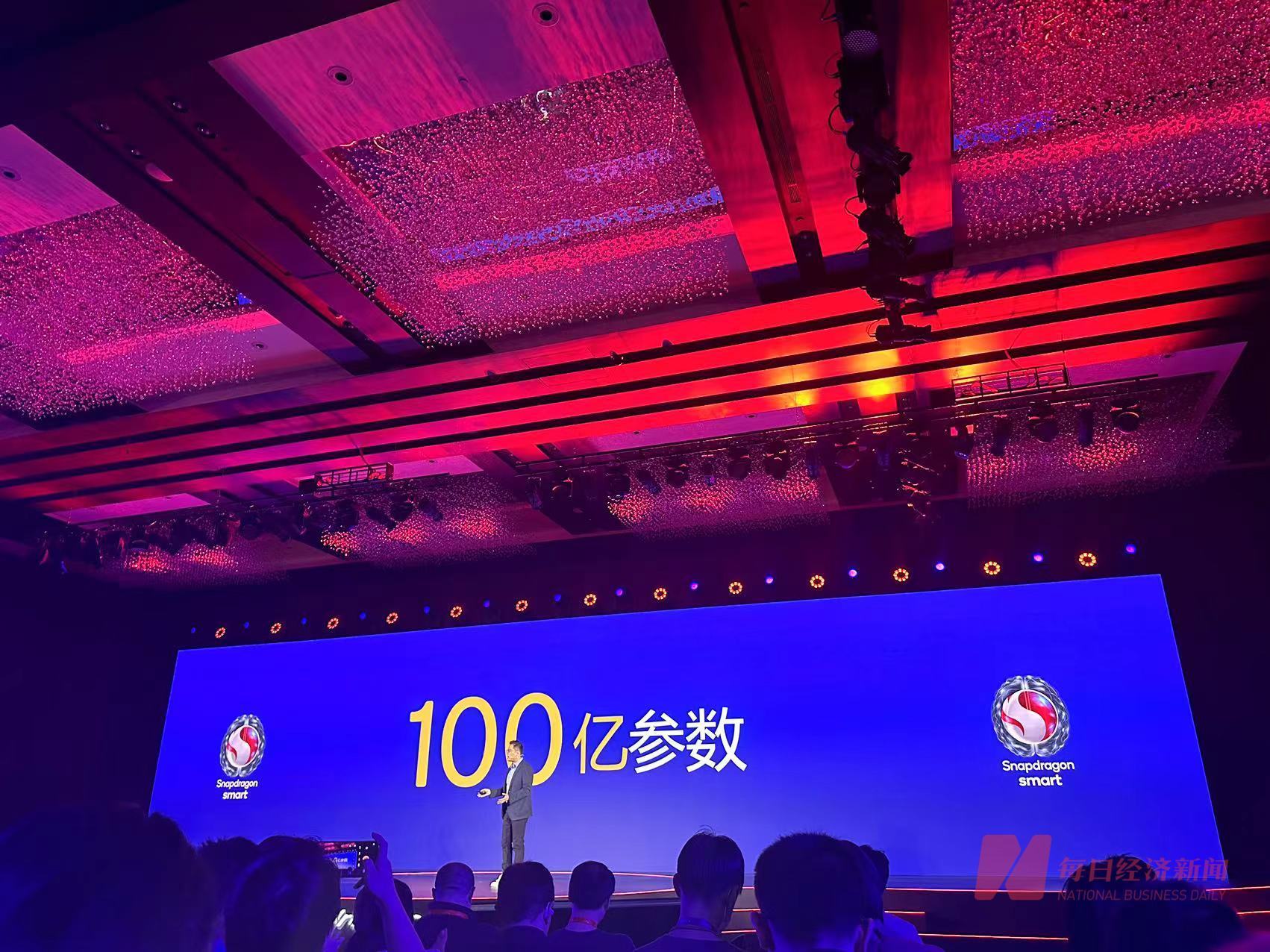Qualcomm plus AI mobile phone chip landing model covers mid-range products
At present, mobile phone manufacturers including Samsung, Glory, Xiaomi, OV and Meizu have successively entered the field of AI mobile phones, and a new round of demand for mobile phone hardware is being set off, especially for related chips.
On March 18th, Qualcomm, an American chip manufacturer, held a new Snapdragon flagship product launch conference in Beijing, announcing the launch of the third generation Snapdragon 8s mobile platform. National business daily reporter noticed on the spot that in terms of basic performance architecture, Snapdragon 8sGen3 is still equipped with Qualcomm KryoCPU, which inherits the same CPU architecture as Snapdragon 8Gen3, including a super core with a main frequency of 3.0GHz, four performance cores with a main frequency of 2.8GHz and three efficiency cores with a main frequency of 2.0GHz.
However, from the positioning point of view, Snapdragon’s 8sGen3 is slightly lower than Snapdragon’s 8Gen3 released in October last year, which means that in addition to high-end flagship products, some mid-range mobile phones will also have AI functions this year.
Ma Xiaomin, Senior Director of Product Market of Qualcomm Technology Company, introduced that in terms of generative AI, Snapdragon 8sGen3 supports the multi-modal generative AI model running on the end side, and the model parameters are up to 10 billion. The person in chMetarge of Qualcomm also said that the chip supports a wide range of AI models, including Baichuan-7B, Google GeminiNano, Llama2, and ChatGLM of Zhipu AI. In terms of images, Snapdragon 8sGen3 supports real-time semantic segmentation of photos and videos, and it is more accurate to identify and segment objects and scenes.

Image source: Every photo by reporter Jing Wong
Referring to the parameters of the end-side model, Guo Tianxiang, a senior analyst of IDC China, said to the reporter of national business daily through online analysis: "At present, the 10 billion end-side model (for consumers) will not be improved and upgraded in a subversive way. Next, more applications will need to use the model of cloud measuring 100 billion or even more parameters. However, the improvement of model parameters will become part of the competition of AI mobile phones in the future, but more importantly, it is necessary to actually improve the consumer’s experience from the usage scenario. "
Traditionally, every time Qualcomm releases its flagship chip, it will be favored by major Android phone manufacturers. At the press conference, mobile phone manufacturers including Glory, iQOO, realme Realme, Redmi and Xiaomi indicated that they would adopt Snapdragon 8sGen3, and commercial terminals are expected to be available in the next few months.
In recent years, it has become the biggest goal of Qualcomm to promote the production AI to reach all kinds of terminals, including a wide range of consumer electronic products. In January of this year, Qualcomm CEO An Meng shared how AI will profoundly affect the way people interact with terminals. "The revolutionary significance of generative AI is that the information on the terminal can help AI become a ubiquitous personal assistant, promote the integration of mobile phones and the cloud, and bring new ways of interaction to smart phones. There are also many amazing AI use cases in major mobile phone brands. Will be deployed in mobile phones in 2024; Let the car become a new computing space and support users to really talk to the car. "
According to him, the Snapdragon platform has now supported more than 40 different models, and the generative AI application will become a reality in the new terminal products launched this year.
In addition to Qualcomm, another mobile phone chip manufacturer, MediaTek, has also launched a mobile phone SOC chip with AI computing power-Tianji 9300, which provides the underlying performance and technical support for end-to-end generative AI. For example, the SDXLTurbo engine of Wenshengtu can generate images in real time according to the text input by users; The video generation capability of Diffusion can generate continuous videos according to the text or pictures input by users, and supports various animation styles.
On the terminal side, major mobile phone manufacturers have announced artificial intelligence plans, introduced customized versions of operating systems, and developed self-generated AI models to seize the wave of AI mobile phones. IDC predicts that in 2024, the global shipment of a new generation of AI mobile phones will reach 170 million units, accounting for about 15% of the total smartphone shipments. Among them, in the China market, with the rapid iteration of new chips and user usage scenarios, the share of the new generation of AI mobile phones will rise rapidly after 2024, reaching 150 million in 2027, with a market share of over 50%.
In the view of Guolian Securities, with the release of a number of new AI mobile phone models and the improvement of user experience brought by AI, smartphone sales are expected to return to the rising cycle.